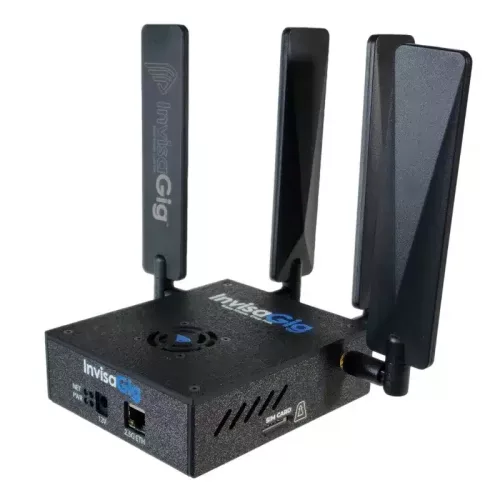Help Page - InvisaGig

Everything we can provide, to date, specific to the InvisaGig modem system should be found on this page.
Community
Visit our community over at https://wirelessjoint.com for troubleshooting, carrier connectivity tips, and tons of information for the beginner all the way to the advanced user.
Our Facebook group is very active and constantly growing, visit us at the LTE 5G Hacks Facebook group.
Main InvisaGig Support Page
Here at The Wireless Haven, we will be providing special tutorials for our customers when we can.
The official InvisaGig support page can be found HERE <link>
Tutorials
We produce tutorials and resources as often as we can. Check back often. If there is anything for your InvisaGig you need help with, and you cannot find the information here, please reach out via our contact form and let us know how we can help you.
Notice: Our tutorial content generally is for Wireless Haven customers. If you own an InvisaGig and do not have access to these videos, after logging into your account here, please contact us so we can ensure that you have membership to this content based on your purchases. Again: You must be logged into your account to see this tutorial content.
Official InvisaGig Documentation - Guides and Tutorials
The InvisaGig website has a full featured support page for guides and tutorials here : https://invisagig.com/support/
Video Tutorials
Other Tutorials and Info
Making sure your IMEI is correct
TTL Settings
By default, the TTL setting on the InvisaGig is set to 65.
If you need this to be different, then log into the main menu of the InvisaGig.
After you have logged in with your password, instead of a menu option, type in the ALL CAPS word:
TTL
Then follow the prompts.
This sets the IPV4 and IPV6 TTL and HL.
Note: IPv6 HL will let some traffic through. This is on purpose, for connection stability reasons. There are some particular IPv6 packets that must go through with a different TTL value. This traffic may get counted towards hotspot data on your plan.
Note IP Passthrough and Static Public IPs
In the world of cellular data and device connections to the world at large, there is a bit of a miscommunication when it comes to IP Passthrough and what that means for cellular internet users.
In short, you don’t get an IP address that you can use on the general internet. There is NO IP to PASSTHROUGH. Not in practical repeatable controllable cases at least.
In general when it comes to cellular internet connections, whether on a cell phone, tablet, hotspot, or a modem, all customers of these services are being placed on the cell carriers own network to be routed as the cell carrier desires. This means that all of your data traffic, when it leaves your location and travels out into the wild world wide web, it first travels through the cell carriers network (think of this like it goes through your neighbors router immediately after it leaves your house), and then on to other servers around the world eventually making it to the destination that you need to pull information from (web sites, app servers, games, email, etc).
When your data travels through this carrier network, after leaving your location, it is doing so through a network of routers that have their own rules for routing. We call this CGNAT.
The carrier NAT assigns your connection to them an IP address that only the carrier can use, the IP address that you see when you go to a site like whatismyip.com and so forth, is not the same IP address you might see on your InvisaGig as the assigned IP. This IP that the web is saying is your IP is actually the SAME IP that MANY MANY others will also see as THEIR IP address. The carriers do this to conserve IP address use, and we have no control over it.
NOW. You CAN get a static public IP address from the carrier assigned to your SIM card. Different carriers will do this for a monthly fee, Tmobile being the lowest cost option at ~$3 at the time of this writing. This IP address CAN be passed through and IS publicly accessible if the device that your InvisaGig is connected to allows external connections (like SSH or similar remote connection protocols).
You will need to contact your carrier for a static public IP, and make CERTAIN you understand that they also generally assign the IP location permanently. Make sure you know about the choice for the IPs location so that you don’t end up getting all of your traffic routed across the country from you before it can go anywhere.
Understand too that some of these plans, like from Tmobile come with some problems as well, like lowered network priority (slower during peak hours) and sometime restrictions from 5G SA access, or 5G access at all. You will also lose all ability to use IPV6 if that matters to you.
NOTE: Tmobile does offer a static IPV6 address option as well, but from what we have seen, no one at Tmobile has any idea how to do it or how it works on their end. I would opt to avoid it for now.
Sponsored Data Plans
You should use a data plan with your InvisaGig that can be sourced by YOU. If you cannot secure a data plan from any carrier for any reason, usually the option is to find a company that resells data plans to end users.
Usually this is because the costs of higher data usage plans, or the higher usage plans are harder to find or the alternatives are harder to tinker with (phone and tablet plan ‘magicks’).
We do have a company that we work with directly, that can supply a SIM card for your InvisaGig. We do profit from these plan referrals. They are for any carrier.
